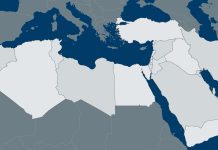Syria’s civil war, which began in 2011, displaced more than 13 million people, including nearly 5 million who fled abroad. However, with the sudden collapse of Bashar Assad’s regime on Dec. 8, many could soon make their way back to the country. After fleeing Syria, most of the refugees stayed in the region. The largest share, some 3.1 million people, settled in Turkey. Another 1.6 million sought shelter in Iraq, Jordan and Lebanon. The primary destination outside the region was Germany, which hosts more than 850,000 Syrian refugees.
Though many may wish to return, several regions remain unstable as factions compete to fill the power vacuum. Key territories, including oil-rich areas east of the Euphrates River, remain outside the control of the rebel group, Hayat Tahrir al-Sham (HTS), that led the final offensive against Assad’s forces. Those areas are instead managed by U.S.-backed Kurdish forces known as the Syrian Democratic Forces, who recently signed a U.S.-brokered ceasefire agreement with the rebels and withdrew from Manbij. Turkish-backed rebels control border zones between Syria and Turkey, acting as a buffer for Ankara. Finally, Israel declared that Assad’s fall nullified their 1974 agreement to demilitarize the Golan Heights, and Israeli troops swiftly moved in to seize the area. Israel also launched major airstrikes targeting military equipment, chemical weapon caches and other threats it wanted to keep from falling into extremists’ hands.
With Assad gone, Syria faces a critical rebuilding phase. HTS plans to establish a technocratic government by March. Many displaced Syrians hope to return, including those in Turkey, where millions of refugees have strained political and economic systems. Many will need to wait for their communities to be reconstructed. Others have already started new lives abroad and will not want to leave. And in addition to the risk of a renewed conflict between the remaining groups, interference from the U.S., Russia, Israel and Turkey complicates Syria’s recovery, risking further destabilization as these powers vie for influence.







